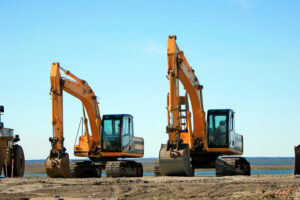More and more people nowadays choose log cabins when it comes to their permanent residence as well as vacation homes. Of course, a great advantage of log cabins is their cosy appearance and feel, but also the ease and simplicity of built.
Thanks to the building materials used, the insulation properties of wood as well as its energy efficiency, log cabins have proved to be the go-to solution for sustainable and eco-friendly living, too. If you’re interested in turning your lifestyle greener and minimizing your carbon footprint, you might find a log cabin to be the ideal home solution for you.
Conserving Energy for Added Efficiency
The logs used in the building of log cabins tend to be a rather amazing insulator and energy savers. The key is in using logwood, which has the ability to collect warmth during the day and then radiate it throughout the night.
One of the biggest concerns for homeowners is energy waste. Heating and cooling can accumulate high bills and reduce the sustainability of the living environment. Thanks to logwood, the cool/warm air cannot easily escape the interior of a log cabin. This allows for a more pleasant personal environment for longer without the need to use more energy to keep it that way. As such, log cabins guarantee both comfort and energy efficiency.
Sustainably-Sourced Materials
Potential log cabin converts might be confused about the eco-friendliness of these buildings considering they are made of wood. Therefore, it’s important to address this issue and erase all misconceptions. The wood used for building log cabins is typically grown for the special purpose of using it later for the build. It’s ecologically and sustainably sourced with a focus on preventing soil erosion and compaction.
While cutting trees is obviously bad for the environment, the concept of sustainable forestry, where the trees are grown for a specific purpose, can actually be good for the environment. Once these specially grown trees are cut, they retain and store carbon dioxide, thus removing it from the atmosphere.
Double-Glazing to the Rescue
Those of you worried about the insulation properties of other log cabin areas can rest assured that professionals such as Timber Living offer double-glazed windows in their building plan. That way, together with the strong energy conversion from the logs, homeowners can enjoy perfect insulation thanks to the window protection as well.
The Benefits of Sunlight
As mentioned, logwood tends to collect energy in order to radiate it later on. The same goes for sunlight. Often situated in open wooded areas, log cabins can be ideal for introducing solar power to the mix. Utilising sun-sourced energy is another way to minimize one’s carbon footprint, become more sustainable, and lead an eco-friendly lifestyle.
The abundance of sunlight typically associated with the log cabin setting also makes room for other sustainable living practices, such as growing one’s own vegetable garden for instance.
The Ease of Maintenance
Another point of concern for potential log cabin owners is the question of maintenance. But, when you work with a renowned manufacturer, you can definitely count on easy log cabin maintenance in the future.
The owners will be presented with a thorough yet simple guide to help them understand the process of requirements of log cabin maintenance. A great advantage of modern-day log cabins is the improved, eco-friendly wood treatment options. They will protect the wood but won’t actually contribute to the carbon footprint.
More Eco-Friendly Options for the Owners
As an eco-friendly structure, it’s only logical that log cabins tend to attract people who are interested in leading an eco-friendly lifestyle. The entire concept of a log cabin, therefore, allows those people to explore and further practice other sustainable methods.
For instance, log cabins allow for the use of many greener alternatives, such as mortar instead of petrochemical-based synthetic chinking or working with recycled materials for other cabin essentials such as plumbing and electricity. When it comes to added insulation properties, it’s easy enough to opt for sheep’s wool instead of fiberglass.
Log cabins aren’t only eco-friendly on their own, but they also allow the owners to make the most out of the cabin’s environmentally friendly features. Regardless of the floor plan and design, log cabins can effectively minimize the carbon footprint of the residents, allow for more sustainable living, as well as protect the environment – all while helping save money in the long run and creating an ideal setting for a happy and mindful lifestyle.















